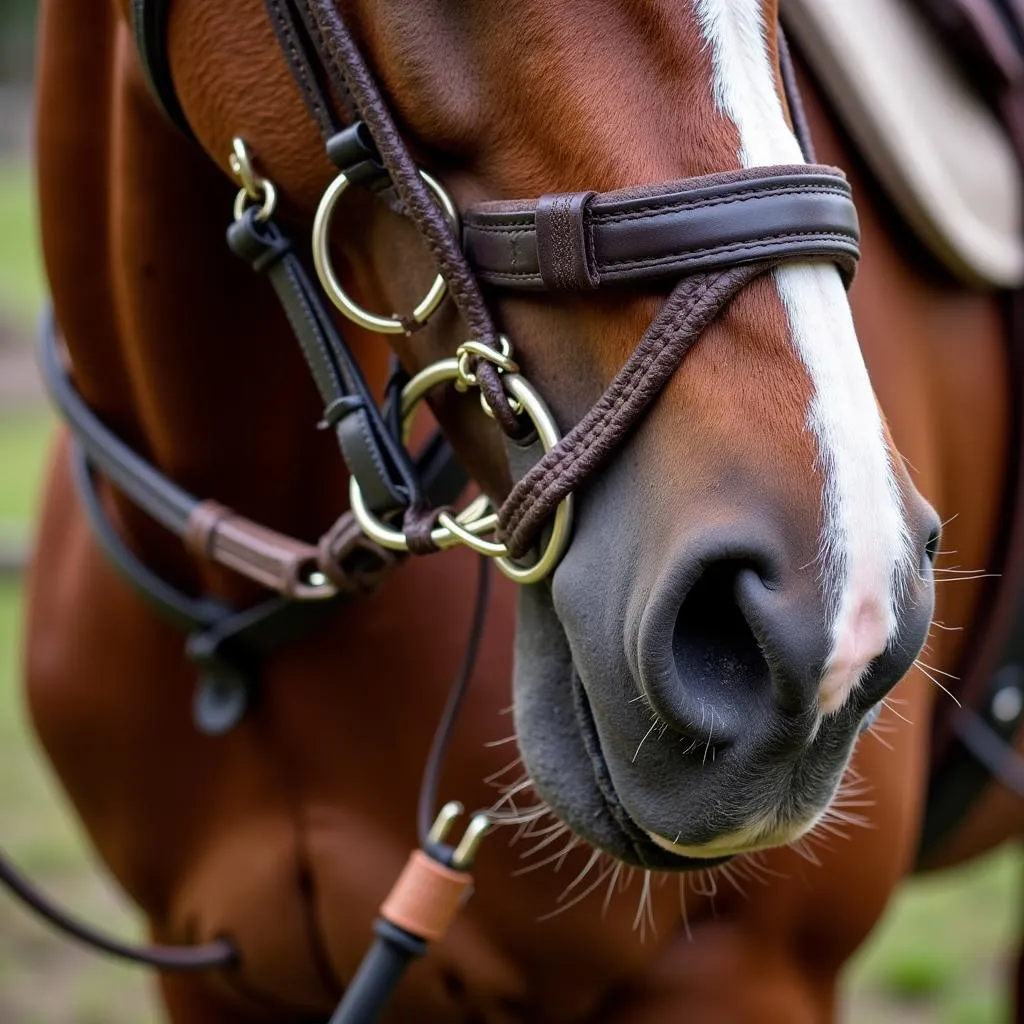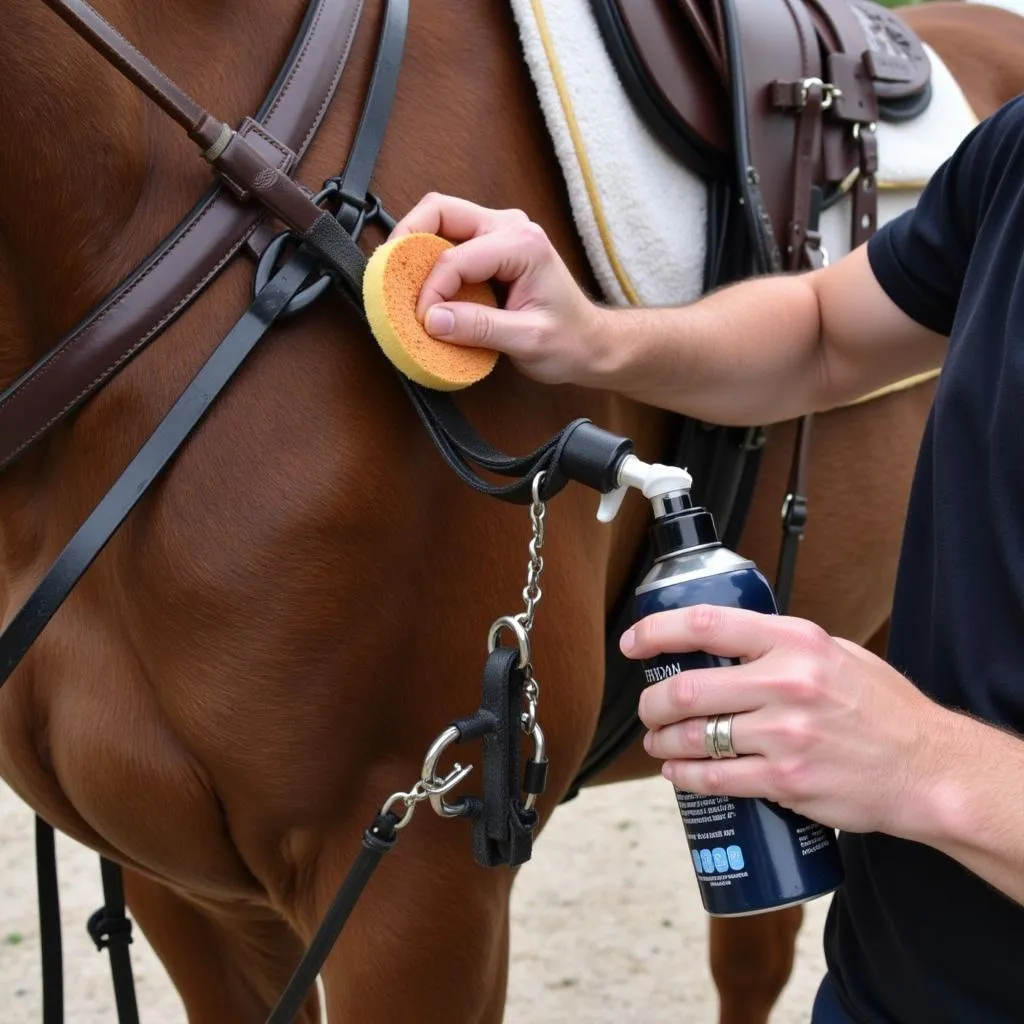A Horse Driving Harness is an essential piece of equipment for anyone who wants to drive their horse. It is a complex system of straps and buckles that connect the horse to the vehicle, allowing the driver to control the horse’s movements and speed. Choosing the right harness and ensuring a proper fit are crucial for the horse’s comfort, safety, and performance.
 Leather Horse Driving Harness
Leather Horse Driving Harness
Types of Horse Driving Harnesses
There are many different types of horse driving harnesses, each designed for a specific purpose. Some of the most common types include:
-
Breaststrap Harness: This is the simplest type of harness, often used for light driving activities like pleasure driving or exercise. It features a single strap across the horse’s chest and is suitable for single horses.
-
Collar and Hames Harness: Ideal for heavier work such as pulling carriages or farm equipment, this harness distributes weight more evenly across the horse’s shoulders and chest. It features a padded collar that sits around the horse’s neck, connected to hames, which transfer pulling force to the vehicle.
-
Liverpool Harness: Commonly used for show driving, this harness prioritizes a sleek and elegant appearance. It features a distinctive breastplate and is often highly decorated.
-
Quick Hitch Harness: Designed for convenience, this harness allows for faster hitching and unhitching of the horse. It often uses snap hooks and other quick-release mechanisms.
Choosing the Right Horse Driving Harness
Selecting the appropriate harness is crucial for your horse’s well-being and performance. Here are key factors to consider:
-
Horse’s Size and Build: Measure your horse carefully, taking into account its height, girth, and conformation.
-
Type of Driving: The harness should align with your driving activity, whether it’s pleasure driving, competition, or heavy work.
-
Material and Quality: Leather is durable and traditional but requires proper care. Synthetic materials offer easy maintenance and affordability.
-
Fit and Comfort: A well-fitted harness should lie comfortably on the horse’s body without pinching, rubbing, or restricting movement.
 Horse Driving Harness Fitting
Horse Driving Harness Fitting
Parts of a Horse Driving Harness
Understanding the different parts of a harness is essential for proper use and maintenance. Key components include:
-
Bridle: The headstall, reins, and bit are collectively called the bridle and are responsible for controlling the horse’s head and direction.
-
Collar (for Collar and Hames Harness): This padded ring sits around the horse’s neck, distributing the weight of the load over a larger surface area.
-
Hames (for Collar and Hames Harness): These wooden or metal pieces connect to the collar and transfer the pulling force from the horse to the vehicle’s shafts.
-
Breastplate or Breastcollar: This strap or padded piece goes across the horse’s chest, helping to keep the harness in place and prevent it from slipping back.
-
Traces: These long straps connect the harness to the vehicle, transferring the horse’s pulling power.
-
Backstrap: This strap runs along the horse’s back, connecting the harness to the saddle (if used) or the vehicle’s shafts.
-
Crupper: This strap goes under the horse’s tail and attaches to the backstrap, preventing the harness from slipping forward.
-
Breeching: This part is essential for slowing down or stopping the vehicle. It acts as a braking system, especially when going downhill.
Harness Care and Maintenance
Proper care is crucial for the longevity and safety of your horse driving harness.
-
Regular Cleaning: Clean the harness regularly using saddle soap and water, removing dirt, sweat, and debris.
-
Conditioning: Apply leather conditioner to keep it supple and prevent cracking.
-
Inspection: Regularly inspect all parts for wear and tear, paying close attention to stitching, buckles, and straps.
-
Storage: Store the harness in a clean, dry place when not in use, preferably on a harness rack to maintain its shape.
 Cleaning Horse Driving Harness
Cleaning Horse Driving Harness
Conclusion
A horse driving harness is an investment in both your horse’s well-being and your enjoyment of driving. By carefully selecting the right harness, ensuring a proper fit, and providing consistent care, you can enjoy countless miles of safe and comfortable driving experiences with your equine partner. Remember, a well-maintained harness not only enhances performance but also reflects a commitment to responsible horsemanship.
FAQs
Q: How often should I clean my horse driving harness?
A: Ideally, after each use. If you drive frequently, aim for a thorough cleaning at least once a week.
Q: Can I use a riding saddle with a driving harness?
A: No, riding saddles are not designed for the stresses of driving and can be dangerous for both you and your horse.
Q: What is the average lifespan of a well-maintained leather harness?
A: With proper care, a leather harness can last for many years, even decades.
Q: Can I leave my harness on my horse for extended periods?
A: No, it’s not recommended. Always remove the harness after driving to prevent discomfort and potential sores.
Q: Where can I find a qualified harness fitter in my area?
A: Contact your local equestrian supply store, driving club, or veterinarian for recommendations.
Need assistance with horse driving harnesses or have more questions? Contact us at Phone Number: 0772127271, Email: [email protected] or visit our location at QGM2+WX2, Vị Trung, Vị Thuỷ, Hậu Giang, Việt Nam. Our dedicated customer support team is available 24/7. Explore our website for additional articles and resources on horse care and equestrian equipment.